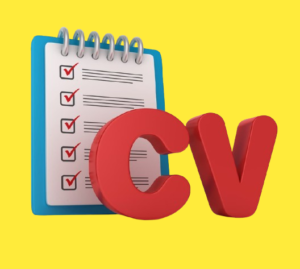When applying for jobs in the UK, it is important to submit a CV that is tailored to the British market. This means following the UK CV format, which has some key differences from the US and other countries.
In this blog post, we will provide a breakdown of the key sections and content that should be included in a UK CV. We will also offer some tips on how to make your CV stand out from the competition.
What Is a UK CV?
A CV, or Curriculum Vitae, is a document that outlines your qualifications, work experience, skills, and achievements. In the UK, a CV typically differs from resumes used in other countries like the US. The UK CV focuses on your career history and academic background and can range between one to two pages, depending on your experience.
Why Is Following the UK CV Format Important?
The UK job market has specific expectations regarding how CVs should be formatted and the kind of information they should include. Employers spend only a few seconds scanning each CV, so presenting your information in the right format can ensure your application stands out for the right reasons. Adhering to the UK CV format not only shows that you understand local expectations but also enhances the readability and flow of your CV.
Read More: Perfecting Your CV Layout for Professional Success
Key Differences Between UK and CVs of other countries
There are a few key differences between UK and other countries’ CVs. First, UK CVs are typically longer and more detailed than other CVs. Second, UK CVs often include a personal profile section, which is not typically found in many other CVs. Finally, UK CVs use a different format than CVs used on many other countries.
Key Sections in a UK CV
Now that you know why it’s important to follow the UK CV format, let’s break down each section and discuss what content to include and how to optimise it.
1. Contact Information
Your contact details should appear at the top of your CV. This is one of the most straightforward sections but still requires careful attention to avoid mistakes.
- Name: Ensure your name is prominent, often bolded or in a larger font than the rest of the text.
- Phone Number: Include your UK mobile number, making sure it is correctly formatted.
- Email Address: Use a professional email address, preferably one that includes your name.
- Location: Listing your general location (e.g., London, UK) is sufficient. You don’t need to include your full home address.
- LinkedIn or Portfolio: If relevant, include a link to your professional online presence.
2. Personal Profile or Summary
The personal profile or summary is a brief introduction that highlights who you are, your key strengths, and what you can offer the employer. This section is crucial because it’s one of the first things recruiters will read. Keep it concise, typically between 3 to 5 sentences, and tailor it to the job you are applying for.
Tips:
- Use active language.
- Focus on your career goals and relevant experience.
- Tailor it to the specific job description.
3. Key Skills
Including a ‘Key Skills’ section allows employers to quickly scan for relevant competencies. This section should be tailored to the job role, focusing on the specific skills mentioned in the job description.
How to optimise this section:
- Use bullet points for easy readability.
- Include both hard and soft skills.
- Prioritise skills that align with the job you are applying for.
4. Work Experience
The work experience section is arguably the most important part of your UK CV. Here, you will detail your previous roles, focusing on accomplishments and relevant experience. It should be presented in reverse chronological order, starting with your most recent job.
What to include:
- Job title
- Company name and location
- Dates of employment (month and year)
- Key responsibilities and achievements
Tips for optimising:
- Quantify achievements where possible (e.g., increased project efficiency by 20%).
- Use action verbs like “managed,” “led,” “improved,” or “implemented.”
- Keep descriptions concise but impactful.
5. Education:
Your education section should follow your work experience. Include details of your degrees and relevant qualifications, starting with the most recent.
How to structure it:
- Degree title
- University or institution name
- Dates of attendance
- Any relevant achievements or honours
If you have a degree that is particularly relevant to the job, you might want to include additional information such as key modules or coursework.
6. Certifications and Training: In the UK, certifications or additional training can set you apart from other candidates. These could be technical certifications relevant to your field, management courses, or even language proficiency certifications if applicable to the job.
7. Hobbies and Interests (Optional): Including hobbies and interests is optional, but it can add personality to your CV and offer insights into how you might fit within a company’s culture. Make sure to list hobbies that reflect skills or attributes relevant to the role.
8. References: In the UK, it is common to conclude your CV with a statement that references are available upon request, rather than listing them outright. This keeps your CV concise and ensures you provide the right contacts when asked.

Read More: Why Personal Branding for New Graduates Matters In UK 2024
Additional Tips for Writing it in the UK CV Format
Now that we have covered the essential sections, here are a few additional tips to keep in mind when crafting your UK CV.
Use a Clear, Professional Layout: The layout of your CV is just as important as the content. A cluttered or disorganised CV can be hard to read and may be disregarded quickly. Use a clean, professional font (e.g., Arial, Calibri, or Times New Roman) and ensure consistency in formatting, such as bullet points, headings, and spacing.
Keep It Concise: While it might be tempting to include as much information as possible, UK employers prefer a CV that is concise and to the point. Try to limit your CV to two pages, focusing on the most relevant and impressive information.
Tailor Your CV to Each Role: Customising your CV for each job application is crucial in today’s competitive market. Review the job description and tailor your personal profile, skills, and experience to match the key requirements. This will make it easier for recruiters to see how you are a good fit for the role.
Avoid Including Photos or Personal Information: In the UK, it is uncommon to include photos, marital status, or age in a CV. Including these details could inadvertently lead to bias, and it’s better to focus on your professional experience and skills.
Winding Up!
Mastering the UK CV format can significantly boost your chances of landing a job interview. By including all the essential sections—contact information, personal profile, skills, work experience, education, certifications, and references—and presenting them in a clear, structured way, you’ll be well on your way to success. Keep your CV concise, tailor it to each application, and avoid unnecessary information such as personal photos or age. A well-crafted UK CV is your key to standing out in a competitive job market and securing the role you desire.
Get your CV checked and improve it with section based detailed recommendation, for free: Brand Me 4 Job Free CV Check
Get your LinkedIn Profile Optimised alongside an entire range of Personal Branding: www.brandme4job.com
Join www.stunited.org to build a wide network in the United Kingdom.
Contact us to get Career Assistance in the UK: Call Us Now!
#Brandme4job #Brandme4job.com #PersonalBranding #JobSkillsTraining #E-BookStore #OnlineBooks #SkillDevelopment #UKJobMarket #CareerBranding #CareerInTheUK #JobsInTheUK #CareerOpportunities #JobAssistance #DesignerCV #ATSEnabledCV #AICV #ProfileOptimisation #StunitedProfileOptimisation #CoverLetter #CandidateBooklet #EPortfolio #MagazineFeature #LinkedInOptimisation #UKCVFormat #CVforUKJobs #UKCV #CompleteGuideline




